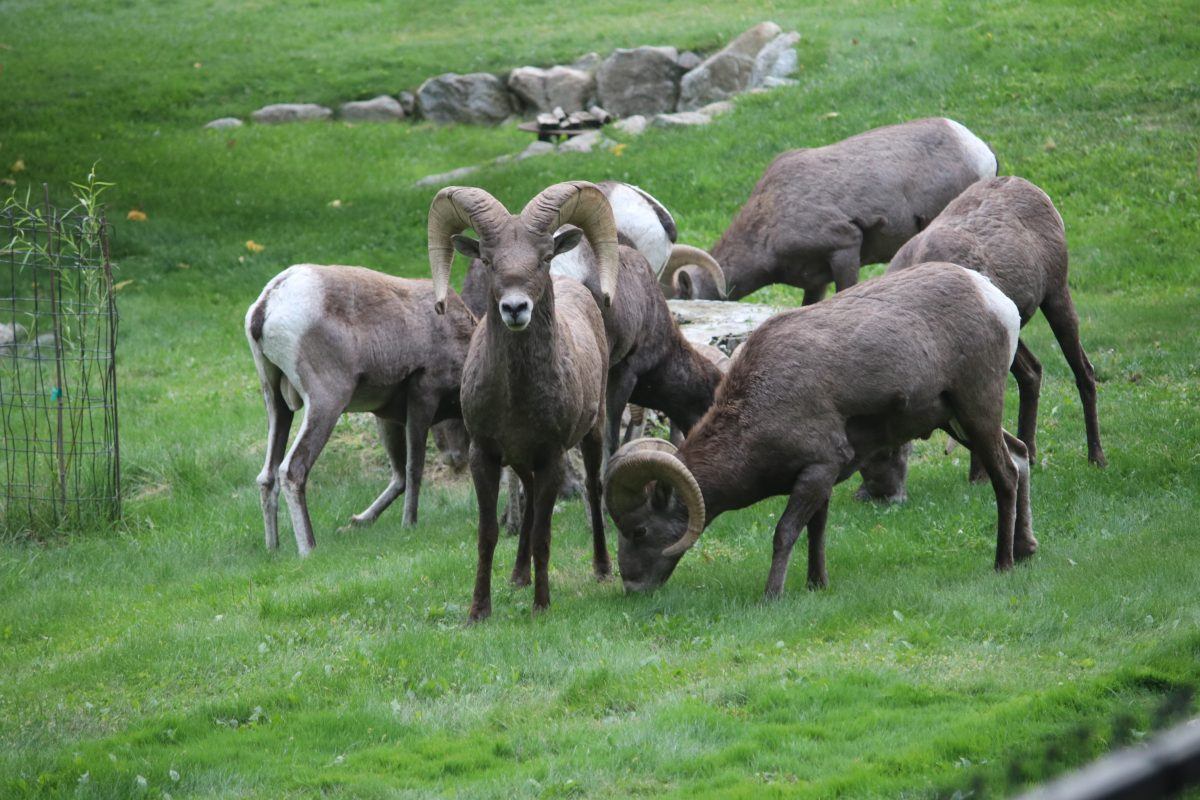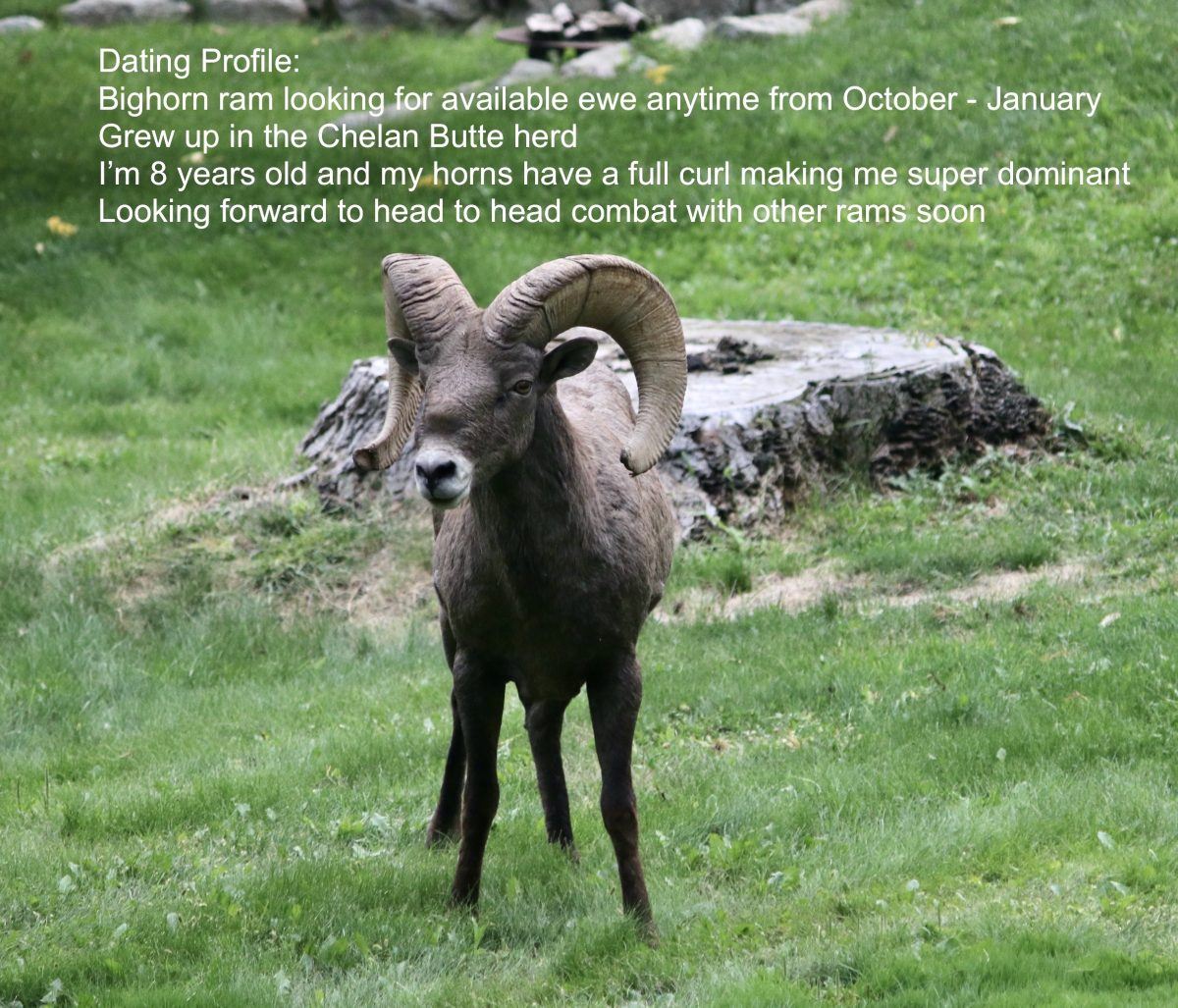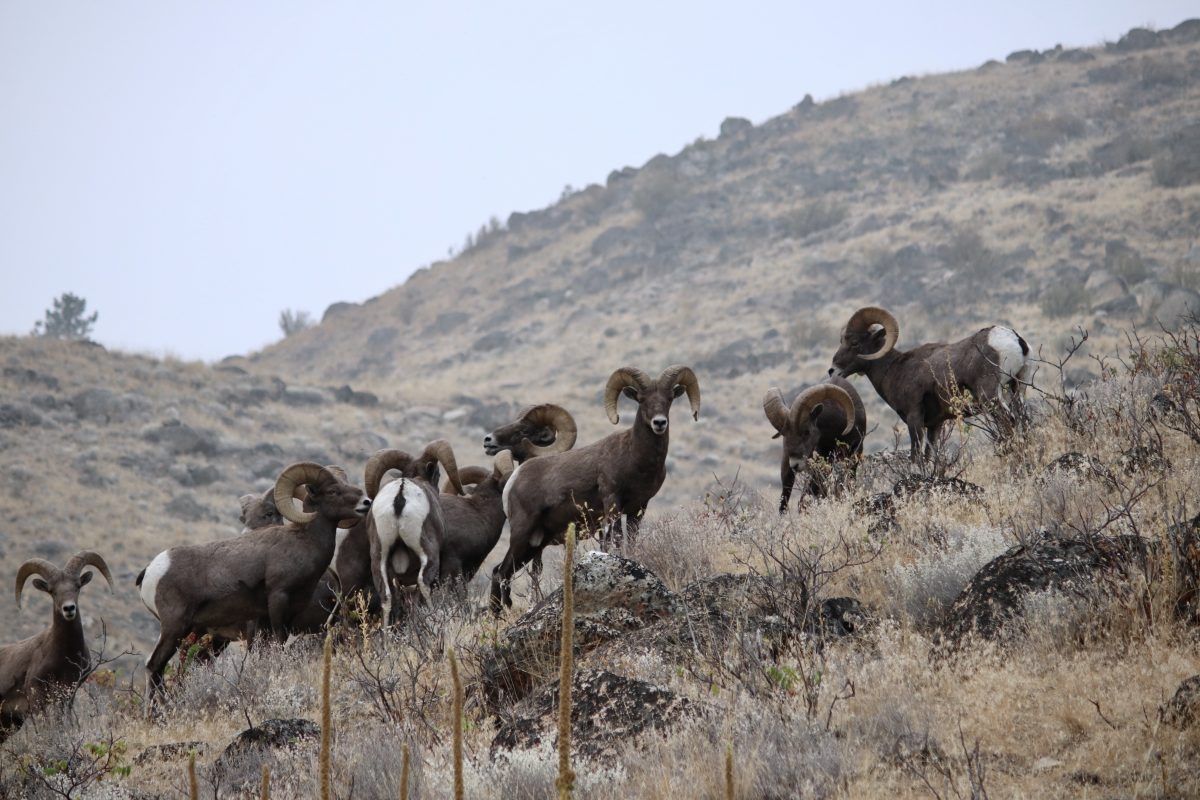Chelan Butte Bighorn Sheep

The view from our kitchen window shocked us one evening. Bighorn rams were dining on our front lawn. The impressive horns that represent both status and a weapon for epic battles were everywhere. Groups from the Chelan Butte Bighorn Sheep herd had visited us several times this summer, but this was our first encounter with the rams.
Indicator Species
“A healthy, thriving herd of bighorns is indicative of a healthy, thriving ecosystem.”
Obviously, the rams felt comfortable enough to be our front yard visitors. What a reassuring sight they were! According to the National Park Service, bighorns are very sensitive to changes in the environment; therefore, they are often referred to as an “indicator species.” “A healthy, thriving herd of bighorns is indicative of a healthy, thriving ecosystem.”
A bachelor party on our front lawn doesn’t happen often, so I quickly scrambled into position under a weeping birch that provided a curtain of limbs to hide behind. This allowed me to capture this extraordinary footage while a flesh-eating wasp tried to sabotage my efforts.
Bachelor Herd
No ewes or lambs allowed in this group! Bighorn sheep travel in separate groups. All of our bighorns are probably part of the Chelan Butte herd that spends most of its time on Chelan Butte. The herd’s range extends into Howard Flats near Chelan Airport over to Chelan Falls and Beebee Springs. This means Bighorns now cross highways, which causes a high degree of stress in the animals and reduces their disease resistance. They need drivers to heed the highway signage and allow them safe passage from one habitat to another to promote gene flow.
The Washington State Department of Fish and Wildlife manage this herd intending to minimize disease outbreaks, increase forage conditions (we helped by offering our lawn), and establish new self-sustaining herds.

To promote the herd’s proliferation, I created an ad for a dating app highlighting this handsome ram. His ad doesn’t say that he weighs ~300 pounds, and his horns are around 30 pounds, and he regularly works out by running up our steep, rugged terrain and leaping to and fro.

Breeding Season
The thick bony skulls of the rams offer them protection from each other during the fall and winter. Rams fight for mating rights or access to the ewes. This begins in October and goes into January. The rams face each other and run at speeds up to 20 miles per hour to clash head to head. The combat could be happening behind our house right now!

Escape Terrain
Bill got this photo just before the herd departed on the hillside behind our house. The rams look much more rugged and fierce on the hillside, their escape terrain versus our lawn. They did some serious nervous scarfing on the lawn and drinking at the tub with trips back and forth from the hillside. Now that everyone’s had their fill, they’ll briskly trot to the top of the mountain to a safer place where they can leisurely rechew the grass they ate. It’s one of the benefits of being a ruminant that they can enjoy an herbaceous meal twice. It’s another benefit to being a ram while living in an extreme environment since they can last longer without a regular water source.
Ewe and Lamb Herd
Our first bighorn sighting was this group of mamas and babies in August. They were very quiet and cautious.

Here they are again on the hillside by Grandma’s house next door. I spotted them on my way out to the four-wheeler. I stealthily texted Grandma, who channeled her inner wildlife expertise and recruited Grandpa to help her put out a watering tub. The group is watching G & G set up the tub and fill it with water.
The herd knows Grandma is a wildlife whisperer, so they decide to trust the situation and come down for a drink. Pregnant and lactating ewes need water more often, so we know they’re thirsty when we see this group. Luckily as organic apple growers, we can live in harmony with these majestic animals that have been such a symbol of our western culture. I love that they can prosper in the rugged landscapes bordering Lake Chelan. Hopefully, the encounters we have had with the Chelan Butte Bighorn Sheep are truly an indicator of a healthy, thriving ecosystem.